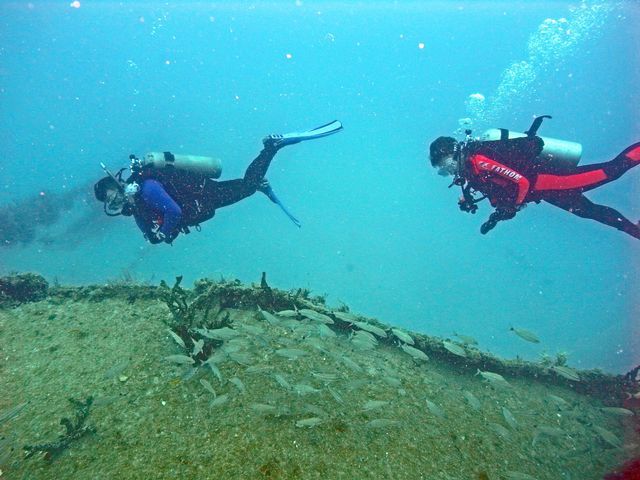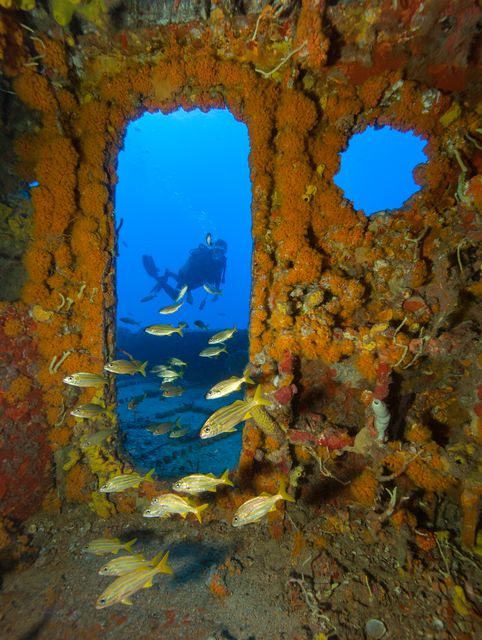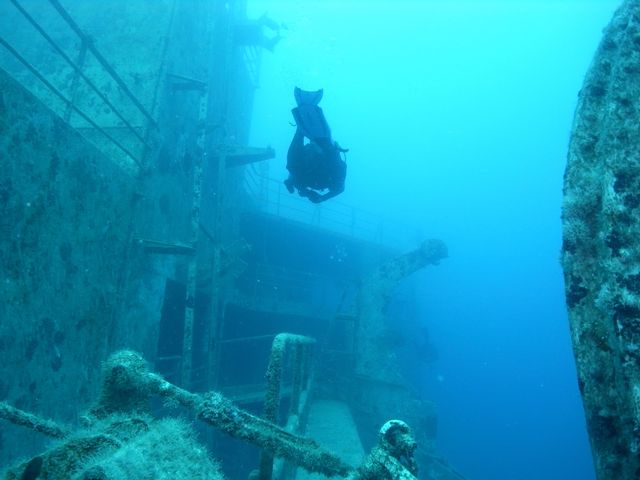Dive Profile: Twin Treasury-Class Cutters
Some of the Florida Keys’ less-visited artificial reefs offer dive delights with rich military history.
Advanced and experienced wreck divers have enjoyed exploring two “Treasury Class” 327-foot U.S. Coast Guard cutters off Key Largo. These twin cutters, dubbed “the 327s,” were named after former secretaries of the United States Treasury Department.
Considered the service’s flagships, the cutters gained some notoriety for battling German U-boats on the North Atlantic and in the Mediterranean.
Commissioned Aug. 1, 1936, Duane was named for William John Duane, the third secretary of the treasury, who served under Andrew Jackson. The vessel’s lengthy service included escort and patrol duty in the Pacific, North Atlantic, support missions off the coast of Vietnam, flagship operations during Cuba’s Mariel Boatlift in 1980 and numerous drug busts in Caribbean and coastal waters during the 1980s.
Decommissioned Aug. 1, 1985, Duane was sunk Nov. 27, 1987, in nearly 130 feet of water to become an artificial reef. In 2002, the site was added to the National Registry of Historic Places.
Duane’s sister cutter, George M.Bibb, was sunk nearby Nov. 28,1987. Named for George M. Bibb, secretary of the treasury 1844-45 under President John Tyler, the cutter Bibb served on active duty for nearly 50 years from 1936 to 1985.
Bibb performed numerous patrol duties during World War II in such ports as Pearl Harbor, Guam and Singapore, escorted and guided merchant ships in Iceland and North Africa, and later undertook coastal patrol operations in South Vietnam. Customary peacetime jobs included search and rescue as well as logistical support for the U.S. Navy.
Both serving more than 40 years, Duane and Bibb became two of the oldest active-duty cutters in the Coast Guard fleet.
Since becoming two of the Keys’ most intriguing artificial reefs, the Duane and Bibb wrecks have attracted large pelagics and sizeable sea turtles. There's no shortage of big barracuda or the occasional manta ray or whale shark, especially during springtime migrations. Corals, gorgonians and basket sponges cloak the twins’ decks.
Bibb rests on its starboard side on a sandy bottom in 130 feet of water, making for an interesting dive perspective from stern to bow with its crow’s nest pointing sideways at approximately 85 feet. The port-side propeller is reachable at 100 feet. Large schools of striped grunts and other reef fish species crowd in and out of the portholes near the flying bridge and other swim-throughs.
Due to their depths, both wrecks are recommended for advanced or specially trained divers.
Florida Keys diving: fla-keys.com/diving
Divers explore the Duane, that is also part of the nine-shipwreck-site Florida Keys Wreck Trek program.
The Duane was named for William John Duane, the third secretary of the treasury, who served under Andrew Jackson. Image: Stephen Frink/Florida Keys
Duane’s sister cutter, George M. Bibb, was named for George M. Bibb, secretary of the treasury 1844-45 under President John Tyler.




